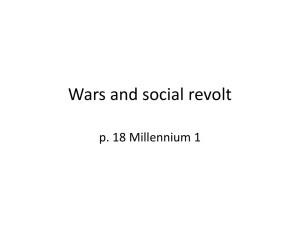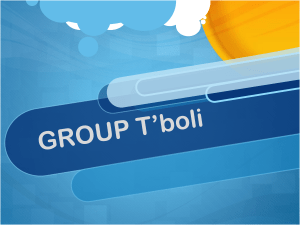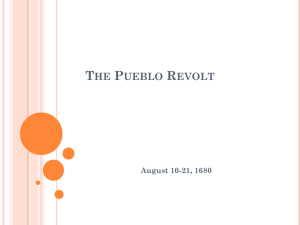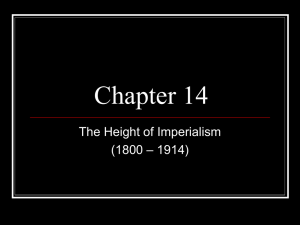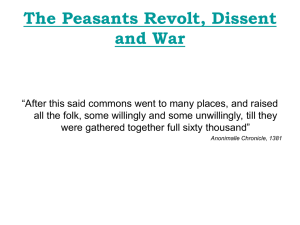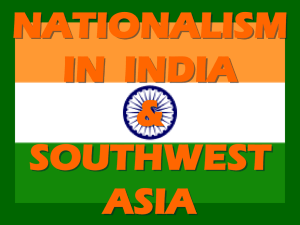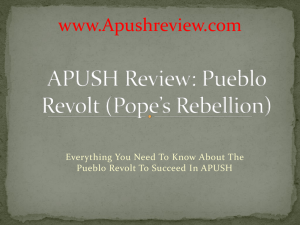EARLY REVOLTS in the PHILIPPINES 2
advertisement
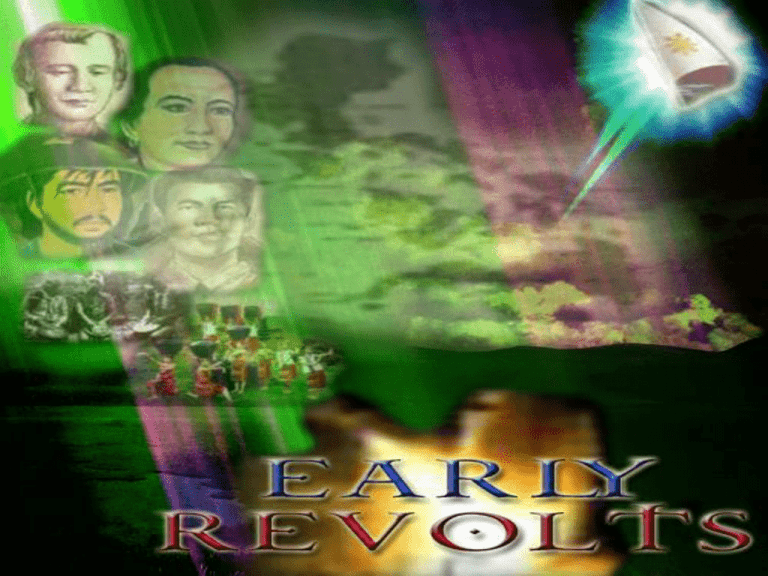
CAUSES OF FILIPINO REVOLTS 1. 2. 3. 4. 5. Desire to regain the lost freedom of their ancestors (Political) Religious intolerance of Spanish authorities (Religious) Abuses of the Spaniards (Personal) The hated tribute and oppressive forced labor Loss of ancestral lands Early Revolts in Philippine History • Identify the causes of the revolts • Create a profile page for a certain revolt and • Discuss the outcome/result of the revolt LAKANDULA and sulayman • Causes of revolt: – Maltreatment of his people by Spanish masters – Broken promises of Spanish officials particularly exemption of his relatives and descendants from tribute and forced labor. • Results: – Armed clash averted by amicable settlement. Fr. Geronimo Martin and Capt. Juan de Salcedo pacified Lakandula and persuaded him to lay down his arms. – He even helped to defeat the piratical attack of Limahong. Magat Salamat (1587-1588) • son of Lakandula • Together with him: – – – – Agustin de Legazpi – Lakandula’s nephew Martin Pangan – Chief of Tondo Juan Bassi – Chief of Taguig Pedro Balinguit – Chief of Pandacan • The Plan: – To bring Japanese warriors and weapons to drive the Spaniards out. – Dionisio Fernandez – a Japanese Christian, who acted as an interpreter – Juan Gayo – a Japanese captain whom they negotiated for alliance and military aid • Result: – Pedro Sarmiento – discovered the plot through Magat Salamat’s friend Antonio Surabao and immediately warned the Spanish authorities. – The leaders were executed. Magalat (1596) • He and his brother urged the people of Cagayan to overthrow Spanish rule during the term of Gov. Gen. Francisco Tello. • His revolt could not be crushed by arms • The Spaniards resorted to assassination which ended his revolt • He was murdered in his own house • First assassination in Philippine History. Igorot Revolt (1601) • The Igorots revolted in defense of their pagan gods. • They killed Fr. Esteban Marin, Spanish missionary. • Capt. Mateo de Aranda – suppressed the revolt Gaddang Revolt (1621) • Due to the abuses of the Spanish authorities • Cagayan Valley • Leaders: Felipe Cutabay and Gabriel Dayag • Result: Fr. Pedro de Santo Tomas – persuaded the Gaddangs to lay down their arms. Tamblot (1621-1622) • A Babaylan led this religious revolt. • He incited Boholanos to return to their pagan religion. • He was joined by 2,000 Boholanos • Suppressed by government troops led by Alcalde Mayor Juan de Alcarazo with 50 Spaniards and more than 1,000 Cebuanos.. GROUP ACTIVITY Each group is given a revolt to work on. Make a profile page for the leader (similar to your fb page). Your work must include the following: a. Profile picture of the leader b. His information c. A status of his revolution d. Comment of the Spaniards against the uprising Bankaw’s Revolt (1622) • Leyte • An old chief of Limasawa became a Christian because he received a royal gift from Spain in recognition of his grandfather’s hospitality to Magellan. • In his old age, with the influence of his son and Pagali, a native priest, he discarded his faith. • He led a religious revolt to restore paganism. • Suppressed by Juan de Alcarazo, one who suppressed the revolt. • His head was placed on a plate and was displayed in public PEDRO LADIA’S REVOLT (1643) • Was a Bornean who claimed descent from Raja Matanda. • Urged the people of Malolos to fight against the Spanish oppressors and enthrone him as King of the Tagalogs. • Fr, Cristobal Enriquez – a parish priest from Malolos, reported Ladia’s plans to the authorities even before the rebel could take the first step. • He was captured and executed in Manila. Juan Ponce (Francisco) Sumuroy (1649-1650) • Cause: harsh order of Gov. Gen. Diego Fajardo compelling men in the village to render forced labor in the shipyard of Cavite. • The Spanish authorities persuaded the natives to lead them to Sumuroy’s hideout in the mountains. • Result: ended in failure, he was taken alive and put to death. Francisco Maniago (1660-1661) • Causes: – Natural love of the Pampangans love for freedom – Hardship of forced labor in forests and shipyards. – Rice taken from the people by government agents without payment • Result: – The cause weakened because Juan Makapagal, powerful chief, remained loyal to Spain. – Accepted the peace offer of Gov. Gen. Marique de Lara upon the advice of a kind friar, Fr. Andres de Salazar Andres Malong (1744-1829) • A military leader who was inspired by Maniago • Led the revolt in Pangasinan • Proclaimed himself as the “King of Pangasinan” • Sent troops to as far as Vigan • Was hanged Pedro Almazan (1661) • In response to Malong’s revolt, he called the Ilocanos to revolt against the Spaniards • King of the Ilocanos • Burned churches • Was executed in the town plaza Tapar (1663) • He was a babaylan who was a new convert to Catholicism. • He founded a new syncretic religion which was a modified form of Christianity. He proclaimed himself "God Almighty" and went around garbed in a woman's dress. • Killed Father Francisco de Mesa, friar curate of Oton. • Mercilessly impaled on a bamboo stake and placed strategically at the mouth of the Laglag (now Dueñas) River to be eaten also by crocodiles. Tumalang (Zambal) Revolt (16811683) • After Malong’s revolt, the Spaniards wanted to make sure that the roots of his rebellion be exterminated. • Governor General Juan de Vargas Hurtado – sent a combine Filipino and Spanish troops to punish the Zambals who helped Malong. • Tumalang fought bitterly but unfortunately he was captured and converted to Christianity. Francisco Dagohoy (1744-1829) • • • • Longest revolt which lasted for 85 years Cause: refusal of Spanish curate, Fr. Gaspar de Morales, to give Christian burial to Dagohoy’s brother Sagarino who died because of a duel. He killed Fr. Morales and urged the Boholanos to rise against the Spaniards. End of the Revolt: – He died due to old age in the mountain. His followers continued the fight – It took 20 successive governorgenerals before the oppression was suppressed – Gov. Gen. Mariano Ricafort – seriously undertook measures to end the revolt. Diego Silang (1762-1763) • Proclaimed the independence of Ilocos. • Demanded the abolition of forced labor and tribute • Took advantage of the chaos of the times owing to the British occupation of Manila. He was befriended by the British. • Causes: – To regain the lost freedom of the Ilokanos. – Spanish abuses and oppression • End of Rebellion: – Silang’s assassination on May 28, 1763 by Miguel Vicos for a sum of Spanish gold and in the name of Catholicism and loyalty to Spain. Gabriela Silang • Maria Josefa Gabriela • Wife of Diego • Was believed to be the first woman to revolt in Philippine History. • Continued the rebellion with the help of Nicolas Carino, Diego’s uncle. • Was defeated by the Spanish forces and later executed Joan of Arc of the Ilocandia Juan dela Cruz Palaris (17621764) • Pantaleon Perez – real name • Revolted because of the abuses of the Spanish government in Pangasinan. • Created a kingdom wherein the capital was Binalatongan (now known as San Carlos City) • Was caught because his sister was forced to tell where to find him. • Was executed Ibanag Revolt (1763) • • • • Isabela and Cagayan Dabo and Juan Marayag Inspired by the revolts of Silang and Palaris Natives declared their independence and refused to pay tributes • It did not last long after Lt. Governor Manuel de Arza ordered is Filipino mercenaries to suppress it. Basi Revolt (1807) • Also known as Ambaristo Revolt • Headed by Pedro Ambaristo • Cause: the government monopolizes the production of wine. Bayot Revolt (1822) • The revolt was headed by the Bayot brothers – Joaquin, Manuel and Jose. They were sons of Colonel Francisco Bayot of the Spanish Army based in Manila. • They revolted because the Insulares were not treated as if they are not Spanish at all. • Planned to overthrow the Spanish government and declare their father as King. • Sentenced to life imprisonment Apolinario de la Cruz (Hermano Pule) (1840-1841) • He wanted to become a priest but was not accepted because he was a native. • He worked instead at the Hospital of San Juan de Dios and acquired his religious education by reading the bible and listening to the sermons of the church. • Founded the Confradia de San Jose which was banned by Spanish authorities. • The Spaniards were denied admission to the Confradia. • Governor General Marcelino de Oraa Lecumberri – banned the organization because according to them it is a form of heresy. • Recruited 4,000 men and armed them with bolos and amulets and encamped a the foot of Mt. Banahaw. • Appointed Octavio Ignacio de San Jorge (Purgatorio) as the leader of his army. • Was executed and his head was cut off and displayed on the road. Failure of the Revolts • • • • Absence of national consciousness Lack of leaders to unite the whole archipelago Regional hostility Archipelagic nature of the Philippines prevented a steady communication in the provinces. • Superiority of the Spanish arms • The betrayals and assassinations of rebel leaders.
